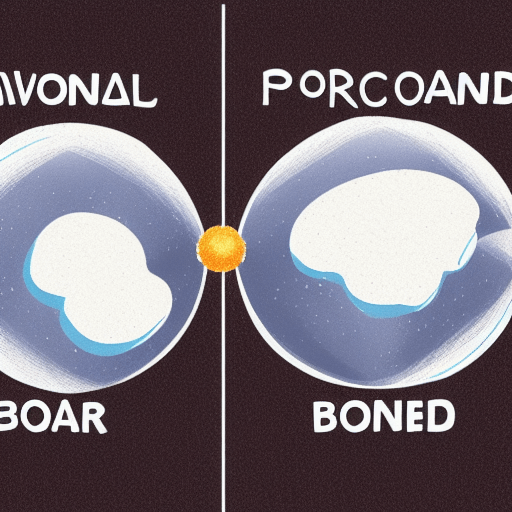What is a polar covalent bond?
This is a question that many chemistry students have asked at some point in their educational careers.
A polar covalent bond is a type of chemical bond that occurs when two atoms share one or more pairs of electrons.
These bonds are very important in chemistry and can be found in many different types of molecules.
Let’s discuss the polar covalent bond in detail and provide examples of molecules that contain polar covalent bonds.

A polar covalent bond is a covalent bond in which the electrons are not shared equally between the two atoms.
Explain It To A Child
A polar covalent bond is a type of chemical bond that forms between two atoms when they share electrons. This happens when the two atoms have different levels of force that attract the shared electrons.
In other words, one atom ends up with more electron density than the other atom. This causes an imbalance of charge, and the atom with more electron density will become negatively charged (the “dipole”), while the atom with less electron density will become positively charged (the “pole”).
What is a polar covalent bond?
A polar covalent bond is a type of chemical bond that forms between two atoms when they share electrons unequally.
This occurs when the two atoms have different electronegativity values, which causes them to attract the shared electrons with different levels of force.
- As a result, the shared electrons spend more time around one atom than the other, giving that atom a slight negative charge.
- The other atom then has a slight positive charge.
Although the charges are very small, they can cause the molecules to interact with each other in interesting ways.
For instance, water molecules are held together by polar covalent bonds, and it is these bonds that give water its unique properties.
What are the properties of a polar covalent bond?
One of the most important properties of a polar covalent bond is its polarity.

This refers to the fact that the shared electrons are more attracted to one atom than the other, resulting in a dipole moment.
This property gives polar covalent compounds many of their unique properties, such as higher melting and boiling points than similar compounds with nonpolar bonds.
In addition, polar covalent bonds are often more reactive than nonpolar bonds, making them important in many biochemical reactions.
How do polar covalent bonds affect molecules and compounds?
Polar covalent bonds are those in which the electrons are shared unequally between the two atoms.

This results in a molecule or compound with a slightly positive charge at one end and a slightly negative charge at the other.
This imbalance can affect the way molecules and compounds interact with each other.
- For example, compounds with polar covalent bonds are more likely to dissolve in water than those with non-polar bonds.
- In addition, the polarity of a molecule can affect its physical properties, such as melting point and boiling point.
Consequently, polar covalent bonds can have a significant impact on the structure and behavior of molecules and compounds.
What are some examples of molecules that contain polar covalent bonds?
There are many examples of molecules that contain polar covalent bonds.
One common example is water.

The water molecule consists of two hydrogen atoms and one oxygen atom, joined together by a polar covalent bond.
The oxygen atom is more electronegative than the hydrogen atoms, meaning that it exerts a greater force on the shared electrons in the bond.
This results in the oxygen atom being partially negative and the hydrogen atoms being partially positive.
Another example of a molecule with polar covalent bonds is ammonia.
Ammonia consists of three nitrogen atoms and one hydrogen atom, joined by polar covalent bonds.
The nitrogen atoms are more electronegative than the hydrogen atom, resulting in a partial negative charge on the nitrogen atoms and a partial positive charge on the hydrogen atom.
Many other molecules contain polar covalent bonds, including many acids, bases, and organic compounds.
Polar covalent bonds are an important part of many chemical processes and interactions.
What are the benefits of understanding polar covalent bonds?
Understanding polar covalent bonds are important for chemists because it allows them to predict how molecules will interact with each other.
For example, molecules with polar covalent bonds are attracted to each other, while those with nonpolar covalent bonds are not.
Additionally, the strength of a polar covalent bond is determined by the magnitude of the electronegativity difference between the two atoms.
The greater the difference, the stronger the bond.
Therefore, by understanding polar covalent bonds, chemists can better predict and understand the properties of molecules.
Article Sources
Jacks of Science sources the most authoritative, trustworthy, and highly recognized institutions for our article research. Learn more about our Editorial Teams process and diligence in verifying the accuracy of every article we publish.
